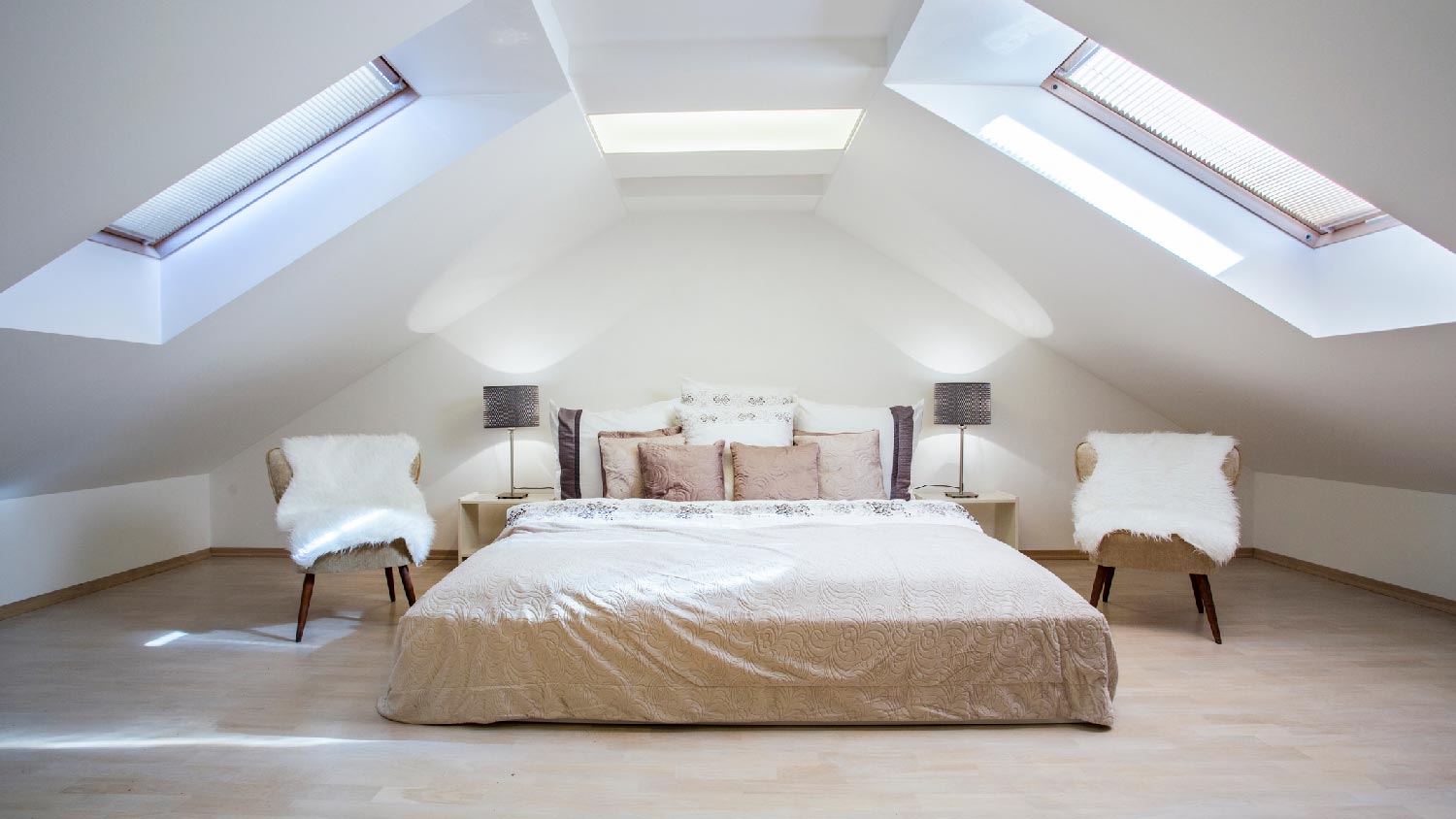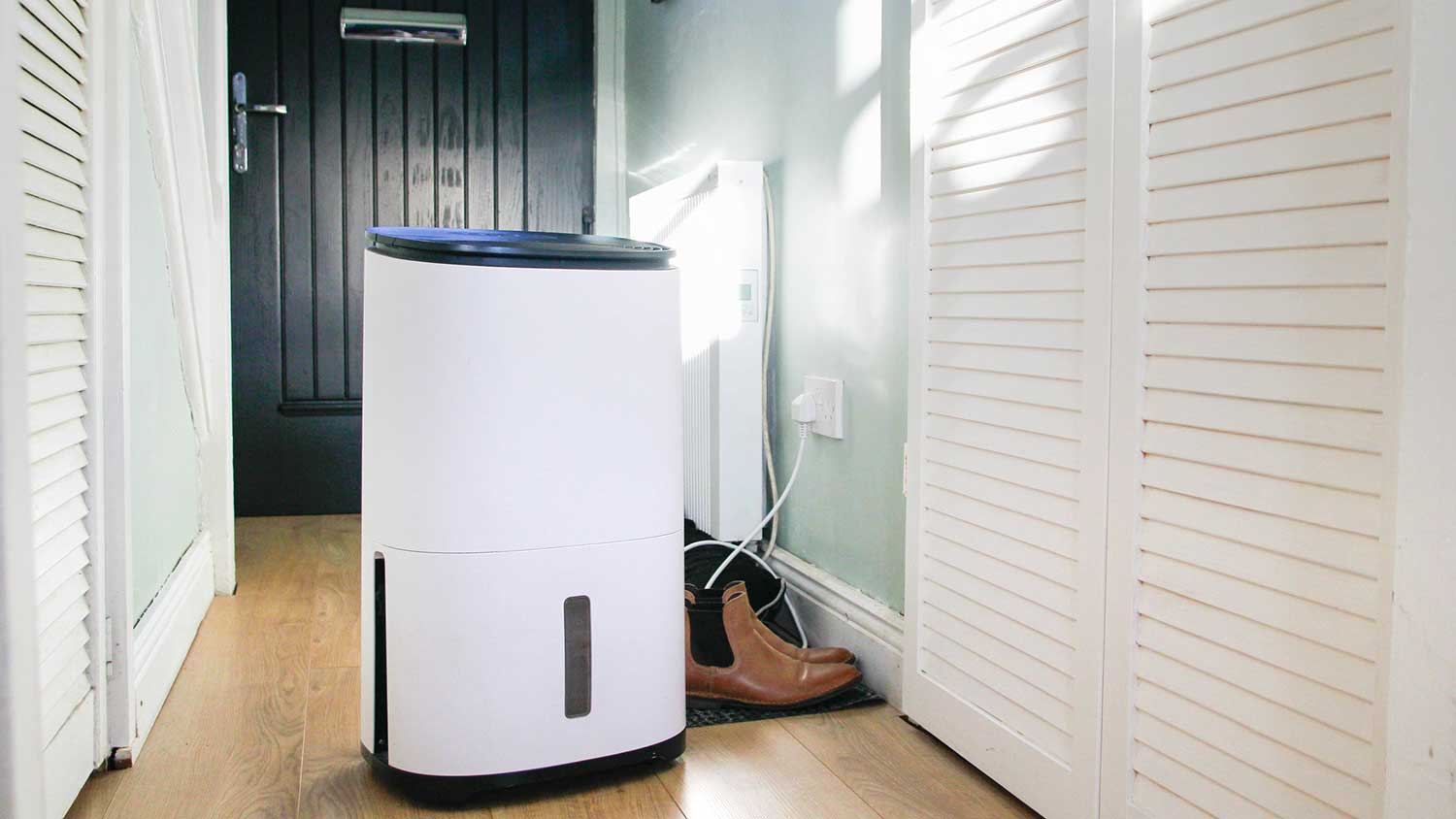Why Is My Attic So Hot? Here are 3 Possible Reasons
Solutions for a space full of hot air


Reasons your attic may be too hot include ventilation, insulation, and the type of roof.
During the summer, attics will typically be 10 to 20 degrees hotter than the rest of the house.
An attic that’s too hot can damage the roof, HVAC system, and the home’s framing.
Hot air rises, so it makes sense that the hottest part of the house is the attic. The attic is also directly below the roofline, and as the sun beats down, it could heat up the air inside the attic faster. Both of these things are normal occurrences, but if you’re wondering why your attic feels like a sauna, something may be amiss in the ventilation or insulation. Let’s look at three reasons why your attic is so hot and find the solution.
1. There Isn’t Enough Ventilation
In a perfect world, hot air from outside would enter through the soffit vents below the eaves and then exit through vents at the roof’s peak, but this may not offer enough circulation to adequately vent the attic and cool it down. If there’s not enough ventilation, particularly near the peak of the attic, hot air can get trapped, raising the temperature to 130 degrees or more.
The Solution
To solve this ventilation issue, you can add more attic vents or even an attic fan to actively draw the air out of the attic. You can hire a local attic fan installation professional, but if you have some DIY skills, you may be able to install an attic fan on your own. Ideally, an attic will have at least 1 square foot of ventilation per 300 square feet of attic space.
2. It’s Not Insulated Properly

The impact of poor ventilation and improper insulation are closely related. A properly insulated attic can help guard against excessive heat. But if the attic isn’t insulated properly, it can cause multiple issues. In the summer months, when the temperatures are hot and the sun is at its most powerful, excess heat can get trapped in the attic creating a stifling environment. These issues are exacerbated when there isn’t enough ventilation to circulate the hot air out of the attic.
The Solution
Attic insulation serves the dual purpose of keeping heat out in the summer and keeping heat in during the winter. Attic insulation costs an average of $2,100, and you may be able to DIY installation. An attic insulation professional near you, however, will be able to assess your home and recommend the correct amount as well as ensure it’s installed properly.
3. The Roof Attracts Heat
Darker colors attract heat, so if you have a dark roof, it will be more likely to absorb heat, allowing it to penetrate through the roof and heat up the attic.
The Solution
If you’re considering re-roofing your home, go with a lighter color roofing material or consider a metal roof, both of which do a better job of reflecting heat than a dark colored roofing material. Natural materials such as slate or clay can also reflect rather than absorb heat, leading to reduced temperatures in the attic.
Signs Your Attic Is Too Hot

For a lot of homeowners, the attic is an area for storage, but often, homeowners won’t even use the attic at all, which means you may not be able to tell your attic is too hot until you see some of these signs:
Higher than normal utility bills
Roof damage
Warped wood framing
HVAC damage
When to Call a Pro
If your attic is getting too hot and you’re not sure why, consider hiring a local home energy auditor who can assess the energy efficiency of your home and make recommendations for how to improve. Attics that retain too much heat can tax the home’s HVAC system, so you may also want to contact a HVAC repair pro near you to do a tune-up on your system and make sure it’s working efficiently.
Frequently Asked Questions
It is normal for the attic to be hotter than the rest of the house in the summer, but only by about 10 or 20 degrees. Attics that aren’t properly insulated or ventilated can reach temperatures of 130 degrees or more which can cause damage to the home’s structure, including the roof, wood framing, and HVAC system.
While it may seem like it makes sense to put a fan in the attic to cool it down, it won’t be as effective as installing attic fans. Ventilation installed near the peak of the roof, whether passive (just allowing heat to escape) or active (drawing the air up and out) will be more effective at cooling the attic.





- Furnace Repair
- Air Conditioning Repair
- HVAC Repairs
- Furnace Installation
- Wood & Pellet Stove Repair
- Dehumidifier & Humidifier Repair
- Heat Pump Companies
- Swamp Cooler Repair
- Wood Stove Services
- HVAC Companies
- Commercial A/C Repair
- Geothermal Installation
- Air Conditioning Installation
- Boiler Repair
- 24 Hour Furnace Repair
- Geothermal Repair
- Heat Pump Repair
- Humidifier Installation
- Thermostat Repair
- Thermostat Installation
- Nest Installation
- Heating & Cooling
- Heating Repair
- Furnace Cleaning
- Furnace Tune-Up
- HVAC Technicians
- Subcontractors
- Furnace Maintenance
- Plumbing & Heating Companies
- Wood Stove Inspection
- Mini Split Installation
- Wall Heater Repair
- Duct Installers










